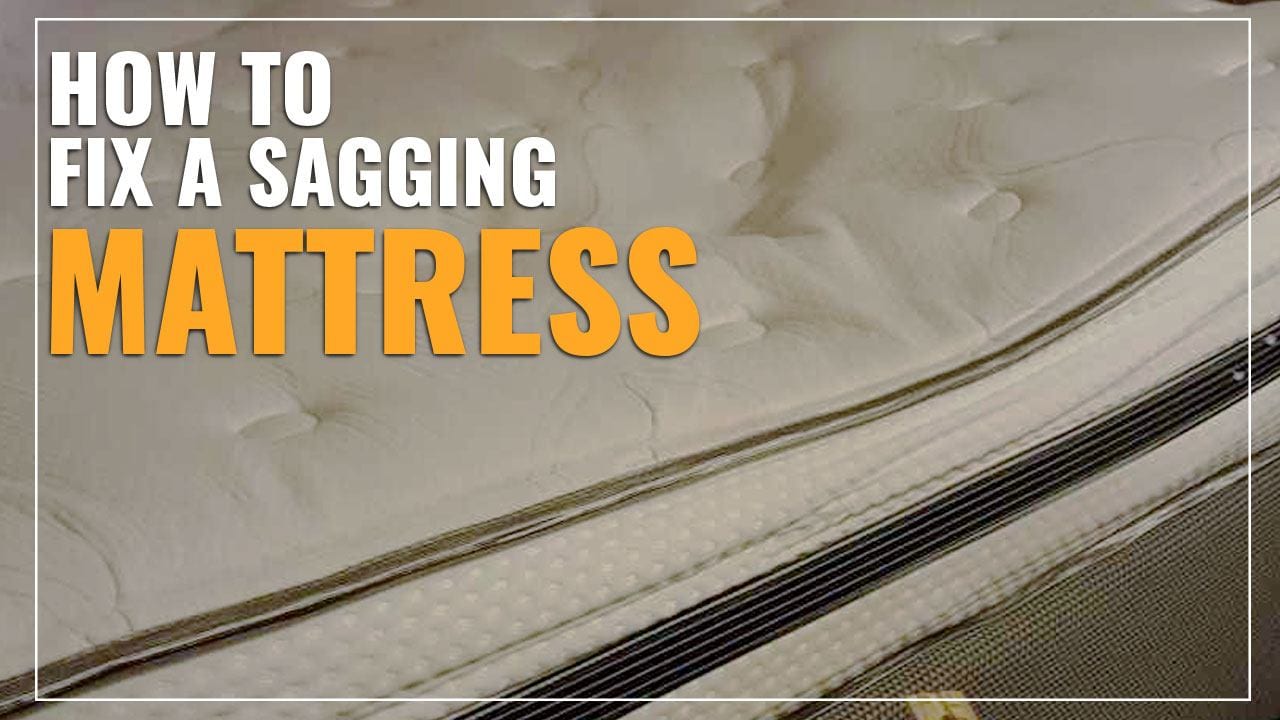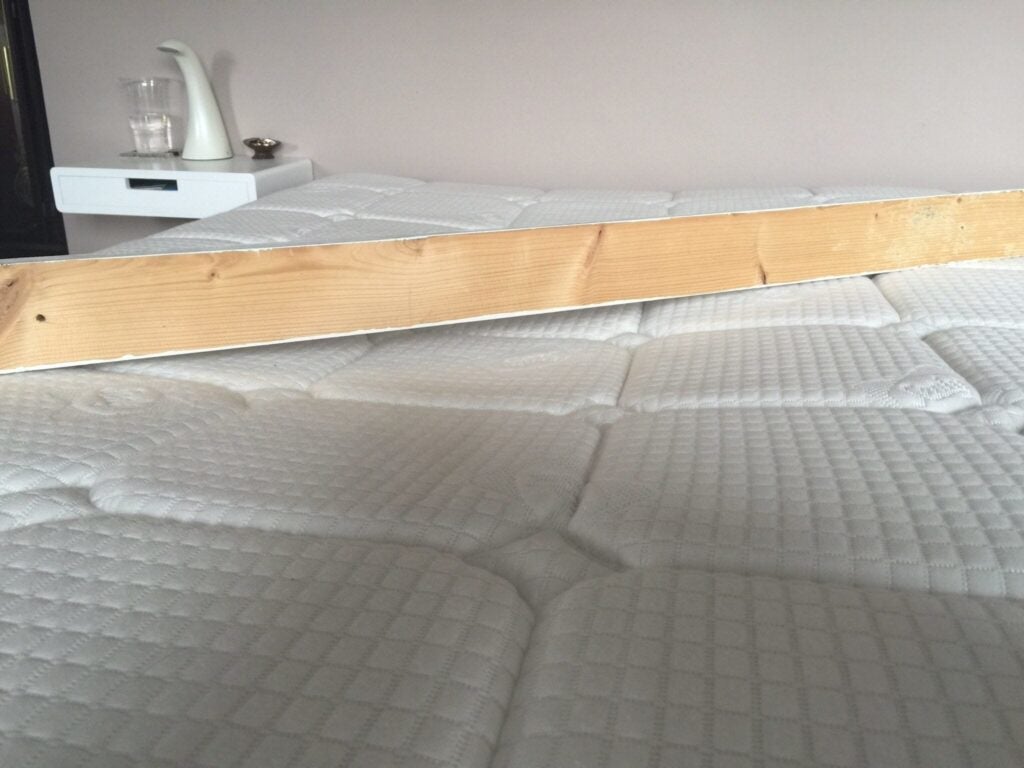If you’re looking to learn how to fix mattress indentation, then you’re in luck! This article will provide you with easy steps to get your mattress looking like new again. Read on to find out how to remove mattress indentations, repair any damage, and choose the right mattress for your needs. With these simple steps, you’ll soon have a mattress that looks and feels like it’s brand new!
Why Do Mattresses Sag?

Sagging mattresses are a common problem. Over time, mattresses can become indented and lose their original shape and support, which can cause discomfort and poor sleep quality. The most common reasons for mattress sagging include normal wear and tear, inadequate support, and incorrect use or care.
Reasons for Mattress Sagging
Normal Wear and Tear: Mattresses start to sag over time due to normal wear and tear. As you sleep on your mattress, it slowly starts to lose its shape and support. This is especially true for mattresses that are not rotated and flipped regularly.
Inadequate Support: If your mattress is not supported properly, it can start to sag prematurely. This is especially true for mattresses that are placed on an uneven surface.
Incorrect Use or Care: Incorrect use or care of your mattress can also cause it to sag prematurely. Sleeping on the wrong side of the mattress, using an improper bed frame, and not rotating or flipping the mattress regularly can all lead to sagging.
How to Prevent Mattress Sagging
The best way to prevent mattress sagging is to ensure your mattress has proper support and is used and cared for correctly. Make sure your mattress is placed on an even and stable surface and use a supportive bed frame. Additionally, rotating and flipping your mattress regularly can help it last longer and maintain its shape. If you have a pillow-top mattress, you should also consider how to fix a sagging pillow top mattress for added support.
How to Fix Mattress Indentation
Fixing a Sagging Pillow Top Mattress
To fix a sagging pillow top mattress, start by turning it over. Flip the mattress so that the sagging side is now on the bottom. This will redistribute the weight and help to fill in the dip. If that doesn’t work, try adding a mattress topper. There are a variety of mattress toppers available, from memory foam to feather down, that will help to support the mattress and make it feel like new again.
Fixing a Dip in Memory Foam Mattress
If you have a memory foam mattress, the solution is a bit different. To fix a dip in memory foam, you’ll need to turn it over and fluff it up. Start by flipping the mattress over, and then use a vacuum to fluff up the foam. This will help to redistribute the material and fill in the dip.
Fixing a Mattress That Sinks in the Middle
If your mattress is sinking in the middle, the solution is to rotate it. Start by flipping the mattress over, then rotate it a quarter turn clockwise. This will help to even out the wear and tear, and redistribute the weight. If you’re still having issues, try adding a mattress topper.
How to Get Dents Out of Mattresses
If you have dents on your mattress, the best way to fix them is to use a vacuum cleaner. Start by turning the mattress over, then use a vacuum cleaner and the upholstery attachment to suck up the dents. This will help to fill in the crevices and make the mattress look like new again.
Frequently Asked Questions
What are the Most Common Causes of Mattress Indentations?
Mattress indentations are usually caused by the body impressions that form from regular use, the type of mattress, and the mattress foundation. Other causes include incorrect support, incorrect mattress rotation, a soft mattress, and a mattress that is too small for the frame.
Is it possible to remove mattress indentations without replacing the mattress?
Yes, it is possible to remove mattress indentations without replacing the mattress. Here are some simple steps to get your mattress looking like new again:
- Rotate the mattress: Rotating your mattress can help even out the pressure points on the mattress and help reduce indentations.
- Flip the mattress: Flipping your mattress can also help reduce indentations.
- Vacuum the mattress: Use the crevice attachment of the vacuum cleaner to remove dust and dirt from the mattress surface.
- Use a mattress topper: Adding a mattress topper can help reduce indentations and improve the comfort of your mattress.
- Add balled-up sheets and blankets: Place balled-up sheets and blankets in the indentations to help fill in the gaps.
- Use mattress lifters: Using mattress lifters can help elevate the mattress, taking the pressure off the indentations.
By following these simple steps, you can easily remove mattress indentations without replacing the mattress.
Does Flipping a Mattress Help to Reduce or Prevent Indentations?
Yes, flipping a mattress can help reduce or prevent indentations. Here are some simple steps to follow to help keep your mattress in top condition:
- Rotate the mattress every 3 to 6 months. This helps to even out any impressions that may have begun forming.
- Flip the mattress over every 6 to 12 months. This redistributes the weight of the mattress evenly.
- Clean the mattress regularly to remove dust and dirt.
- Use a mattress protector to help prevent the mattress from becoming stained.
By taking these simple steps, you can help to keep your mattress in the best condition possible. This will help to reduce or prevent indentations, and keep your mattress looking like new for many years to come.
What type of mattress is best for reducing or preventing indentations?
Memory Foam – Memory foam is the best type of mattress for reducing or preventing indentations since it molds to the shape of the body and springs back to its original form. It also has the ability to distribute weight evenly, preventing pressure points.
Latex – Latex mattresses are also good for reducing or preventing indentations as they are highly durable and have similar properties to memory foam. They also provide great support while conforming to the body’s shape.
Innerspring – Innerspring mattresses are usually firmer than other types of mattresses and are better for individuals who prefer extra support. They also have a longer lifespan and are resistant to indentations.
Hybrid – Hybrid mattresses are a combination of memory foam and innerspring, providing the best of both worlds. They have the support of innerspring and the comfort of memory foam, making them an ideal choice for those who want both comfort and support.
Air Mattress – Air mattresses are a great choice for those who need extra support or those who suffer from back pain. They are adjustable and can be inflated or deflated for optimal comfort and support. They are also resistant to indentations and can provide a good night’s sleep.
How Often Should I Rotate My Mattress to Prevent Indentations?
- You should rotate your mattress once every 3-4 months.
- Flipping your mattress over will help distribute weight evenly, reducing the chances of indentations.
- Rotating your mattress will also help prevent the buildup of dust mites and allergens.
- If you are using a memory foam mattress, you should avoid flipping it, as this can damage the foam.
- If you are using a memory foam mattress, you should rotate it once every 6 months.
Rotating your mattress regularly is an important part of keeping your mattress in good condition. Doing so will help to prevent the buildup of dust mites, allergens, and indentations, ensuring that your mattress will last longer and remain comfortable.
Conclusion
By following the simple steps outlined in this article, you can easily fix mattress indentations and get your mattress looking like new again. Whether you use a mattress topper, rotate the mattress, or adjust your sleep habits, you can restore comfort and support to your mattress.






